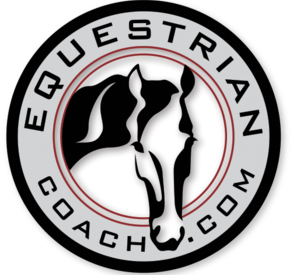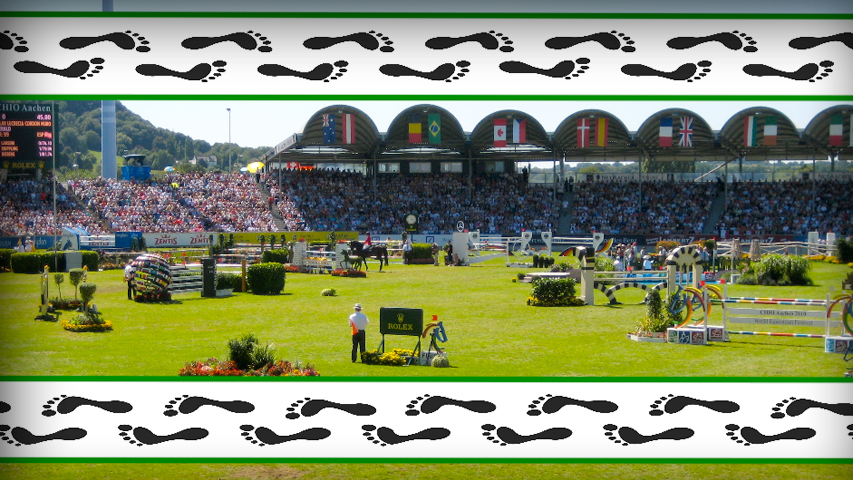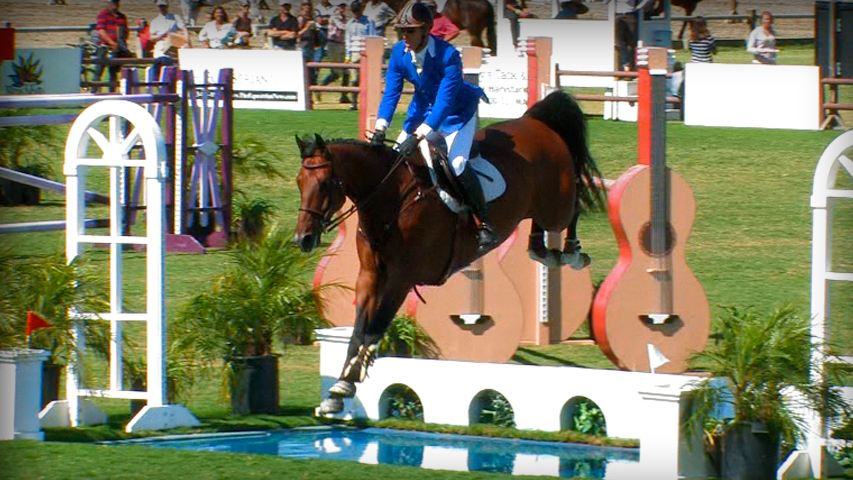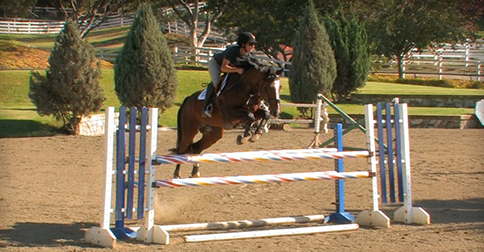Linda Allen
- 17 Aug, 2018
- 0 Comments
- 7 Mins Read
How To Ride Different Types Of Jumps
Submitted by member: Rachel
I would like to know the ideal take-off spots for various different fences: tall vertical with just a top rail vs. ascending oxer vs. Swedish oxer vs. brick wall vs. triple bar vs. trot fence in handy classes vs. combinations with verticals and oxers, etc.
Answer by Linda Allen
Thinking of jumping solely in terms of take-off “spot” doesn’t tell the whole story when it comes to the quality of the jump. The pace used on the approach and departure, the regularity of the stride, and the balance and jumping technique of the horse all enter into creating both a beautiful and effective jumping effort. The general rule for all disciplines is both take-off and landing distances should be equidistant from the top of the jumping arc. For a vertical jump, the top of the arc should be right over the top rail. A square oxer still requires a jumping arc but the top of the arc will be higher so that the arc clears both the front and back. Triple bars move the arc over the last element and thus the take-off point will be closer to the lower front rail. The exact distance in front of the jump for a good take-off depends on the size of the jump and the speed and stride length the horse is on. Whenever the horse makes a noticeable change in the rhythm of their gait in front of the jump, it doesn’t matter if he jumps from a perfect ‘spot,’ it will not be a satisfactory effort. Even worse is when a rider anticipates and ‘jumps’ before the horse. This is the classic ‘miss’ that both horse and rider (and judges) hate!
For Hunters, generally the fences are constructed similarly, with lots of ground line material encouraging the horse to elevate the front legs earlier and well in front of the shoulder. However, the nicest jump still is that which puts the arc over the highest part of the jump. As the jumps go higher for Show Hunters, the distances are customarily lengthened at the shows. Larger jumps require a bigger jumping arc and thus a somewhat longer stride so that the jump appears ‘out of stride’ with no increase or decrease in pace or stride length on either the approach or departure. When the canter used on the approach to a single jump or the beginning of a line of jumps will result in the final stride putting the horse either very far away from the jump or very close to it, some adjustment needs to be made. The experienced rider, as well as the smart and experienced horse, will feel this just as they feel their pace, stride, and balance. Since at the normal cantering pace the difference between a very long, a good, or a very short take-off distance is only a matter of a very few feet (and a horse in a balanced, medium canter can easily change the length of their stride by a foot or more in one stride), correct adjustments are very subtle and are executed over four or more of the final strides on the approach. A big adjustment in the last couple of strides won’t make for a good jump, even if the take-off spot that results is perfect.
Virtually all horses jumping free (without a rider) quickly learn to make adjustments to their approach to a jump to create an easier effort. When inexperienced riders begin jumping at the canter, I prefer to have them focus entirely on the track they are following, the pace (speed) they are on, and maintaining an even rhythm to the fence—allow the horse to deal with any adjustment needed. Small jumps can be negotiated from nearly any take-off spot, as long as the other elements (track, pace, and rhythm) are maintained. Track and pace can be established well back from the jump and if the rider focuses on maintaining them with a consistent rhythm, they are less likely to mess up the horse’s efforts to assure a good enough jump. The biggest errors—those that get riders into trouble and are most discouraging to the horse—are always when the horse is planning on one adjustment and in the last step or two the rider suddenly decides the horse should do the opposite!! When the rider relaxes enough to feel what the horse is doing their natural ‘eye’ will start to kick in. I believe it is essential that a rider, and a green horse, first learn how to ‘handle’ a less than perfect jump. When a rider is confident that they can maintain their balance, security, and a steady confident ride even when a jump happens to come up extra short or long, then they won’t need to panic on those inevitable days when they find it hard to ’see their spot.’ Correcting poor jumps is not accomplished by doing something different at the jump, it is done by improving the quality and appropriateness of the gait during the entire approach.
When we turn to the Jumper divisions, with various distance questions and types and shapes of jumps, both horse and rider need to cope with jumping on different pace, stride, and take-off distances. As the height, and especially the width, increase every factor counts more. A high and wide spread jump requires a powerful jumping effort but a far closer take-off spot than that for a vertical. The best jumpers are capable of jumping from a wide variance in take-off distances depending on the circumstances. They accomplish this by being able to control their impulsion (stored power), length of stride, quick shifts in balance to quickly elevate the front end, and excellent body mechanics over the jump to utilize their back and hind quarters. Riders ability to maintain their own balance and support their horse’s athleticism is at least as important as their ability to ‘see’ a take-off spot. A discussion of appropriate take-off distances over larger jumps would be a long one. Any serious rider would do well to spend a week following a good course designer as they work, and watch, really watch, how a lot of horses jump various jumps and lines—you will learn a lot. But there will always be more to learn!
More Learning
Check out the following blog posts on similar topics:
Adjusting for the Optimal Take-off Spot on a Hunter Horse by Rob Gage
Does Your Horse Have a Long Stride and Struggle with Combinations? by Linda Allen
Video Recommendations:
Walking the Course Series Part One – The Basics
Bernie Traurig
In “The Basics” (part one of a three part series), Bernie breaks down course walking into its most basic components. This topic addresses take off distances, perfecting an accurate walking stride length and the available track options. NOTE: At the aprox 4 min mark Bernie talks about measuring take off distance.
Running Time: 13 minutes and 29 seconds
Fine-Tuning Downward Transitions & Trot Fences
Missy Clark
Missy reveals the exercise that she uses to make both her equitation horses and jumpers comfortable with downward transitions and trot fences. Missy has designed a drill that, with practice, will lead to the mastery of this sophisticated test that often appears in equitation classes.
Running Time: 11 minutes and 18 seconds
Triple Bars
Bernie Traurig
Do you consider triple bars to be freebies on course or are they your nemesis? In this topic Bernie discusses and demonstrates the various elements to take into account when presented with a triple bar, such as pace, balance, impulsion and take off distance.
Running Time: 12 minutes and 53 seconds
Schooling Your Horse Over Open Water
Bernie Traurig
Open water obstacles can be intimidating to both the horse and the rider, so you want to be sure you’ve done your homework to avoid potential faults in the show ring. Join Bernie as he shows us how to properly school over a simulated open water jump in a way that encourages the horse to jump beyond the tape. Nobody wants a toe in the tub on show day!
Running Time: 8 minutes and 55 seconds
Riding Your Rhythm
Mandy Porter
Learn to make yourself ride with a consistent rhythm, with your horse in front of your leg. Maintaining good rhythm and balance can help dramatically to improve your ride by allowing the jumps to come to you instead of unknowingly changing your rhythm in search of “the perfect distance.” Trust that your horse can jump well from many distances as long as you keep this in mind.
Running Time: 16 minutes and 46 seconds
Have Something You Want to Ask Our Panel of Experts?
Ask The Experts is the ultimate way to get help from the top professionals in the equestrian industry without leaving the comfort of your home. This service is available to Monthly, Annual and Lifetime Members of EquestrianCoach.com.






